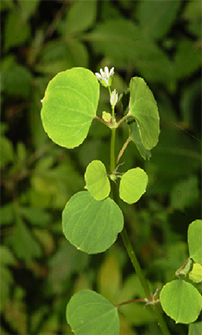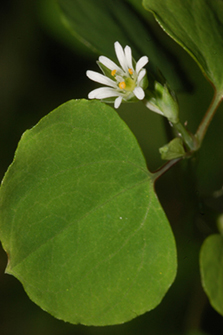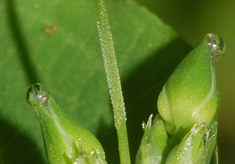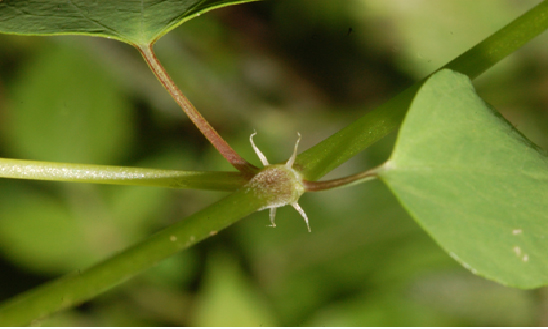 |
QUICK SEARCH
MO PROJECTS:
Africa
Asia/Pacific
Mesoamerica
North America
South America
General Taxonomy
Photo Essays
Training in Latin
America
MO RESEARCH:
Wm. L. Brown Center
Bryology
GIS
Graduate Studies
Research Experiences
for Undergraduates
Imaging Lab
Library
MBG Press
Publications
Climate Change
Catalog Fossil Plants
MO DATABASES:
W³MOST
Image Index
Rare Books
Angiosperm
Phylogeny
Res Botanica
All Databases
INFORMATION:
What's New?
People at MO
Visitor's Guide
Herbarium
Jobs & Fellowships
Symposium
Research Links
Site Map
Search
|
Draft Treatments | Guidelines | Checklist | Citing | Editors The Cutting EdgeVolume XXI, Number 4, October 2014News and Notes | Leaps and Bounds | Germane Literature | Season's Pick SEASON'S PICK: Drymaria multiflora Brandegee (Caryophyllaceae) gets the nod for being this season's most misrepresented, seldom-collected, and tiny-flowered bit of green fodder, nevertheless much deserving a photo essay.
Most of the material recently determined in CR to the obscure and seldom-collected Drymaria multiflora turns out in fact to be nothing but D. villosa Schltdl. & Cham., itself easily distinguished (among other reasons) as the only sp. in CR that is with villous pubescence.
All three other spp. of Drymaria in CR are virtually glabrous, except for the very densely and minutely glandular puberulence on the pedicels (and occasionaly elsewhere). See Barry Hammel's Flickr images to compare this season's featured sp. with D. villosa.
Drymaria multiflora is perhaps more reasonably to be compared/confused with D. cordata (L.) Wild. ex Schult. in CR, which has similarly sized and shaped leaves, but from which it differs most obviously by its entire (instead of lacerate) stipules and relatively longer petioles. To our knowledge, D. multiflora has beeen collected only twice in CR, first by Alexander Skutch (Skutch 2992, MO) and more recently by Manual co-PI Barry Hammel, whose above photos are vouchered by Hammel & Pérez 26807 (INB).
|
© 1995-2025 Missouri Botanical Garden, All Rights Reserved
4344 Shaw Blvd.
St. Louis, MO 63110
(314) 577-5100
Technical Support



